#apocynum cannabinum
Photo

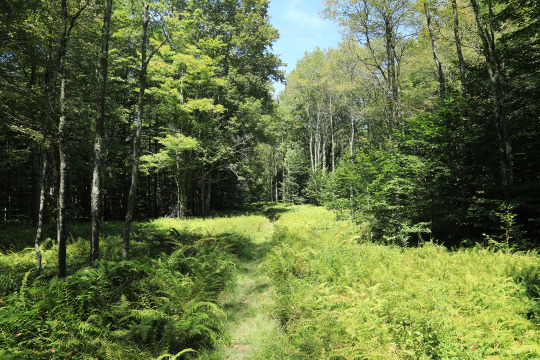
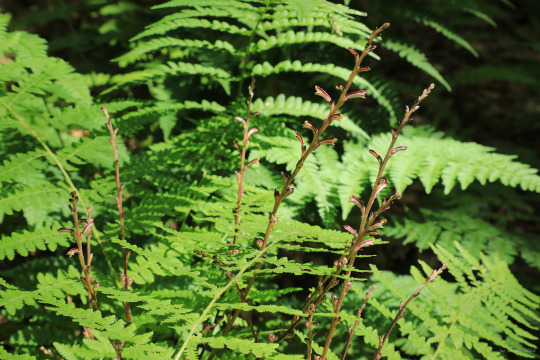

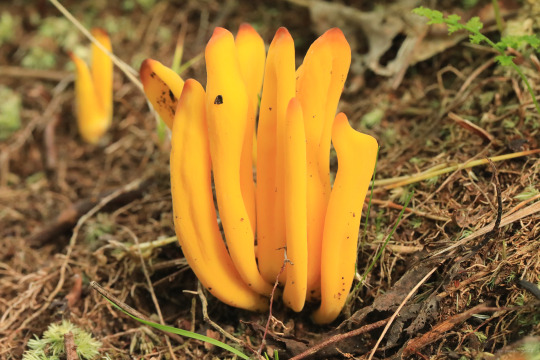

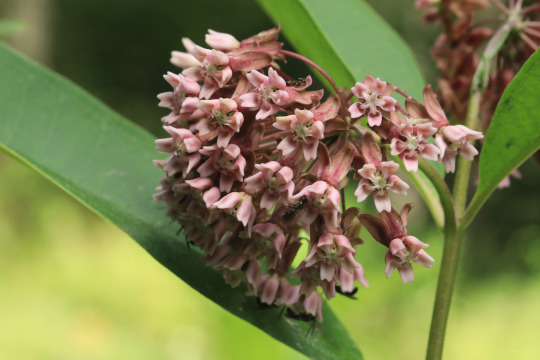

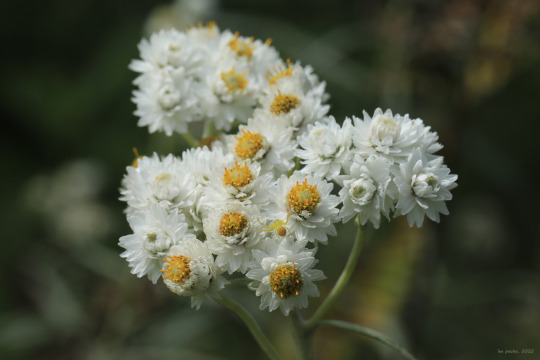

Canaan Valley National Wildlife Refuge, Part 1. Had Allegheny Power gotten its way 40 years ago, the land included as part of this idyllic refuge would today be the muddy bottom of a lake formed by damming the Blackwater River. The power company proposed turning the largest and most botanically-diverse high-elevation wetlands complex east of the Rocky Mountains into a “recreation destination” (e.g., overpriced tourist trap similar to nearby Deep Creek, Maryland) so it could execute a sketchy pump and release hydroelectric scheme. Thankfully, the US Army Corps of Engineers refused to issue a permit, and the nation has been since been rewarded with its 500th national wildlife refuge.
From top: beechdrops (Epifagus virginiana), a really unusual parasitic plant that draws its nutrients from the roots of the American beech tree; golden spindles (Clavulinopsis fusiformis), also known as spindle-shaped fairy club, a glorious late summer coral fungus; great spangled fritillary (Speyeria cybele), a common and lovely member of the Nymphalidae family that practically begs to be photographed; common milkweed (Asclepias syriaca), which blooms late into August at the higher elevation of the valley; Monarch larvae (Danaus plexippus), in their fifth instars; pearly everlasting (Anaphalis margaritacea), a fabulously-beautiful late summer aster much beloved by the dried flower industry; and the stingbean-like seed pods of Indian hemp (Apocynum cannabinum), one of the bittersweet bellwethers of summer’s end.
#appalachia#vandalia#west virginia#allegheny mountains#canaan valley#canaan valley national wildlife refuge#tucker county#epifagus virginiana#beechdrops#clavulinopsis fusiformis#golden spindles#spindle-shaped fairy club#speyeria cybele#great spangled fritillary#asclepias syriaca#common milkweed#danaus plexippus#anaphalis margaritacea#pearly everlasting#apocynum cannabinum#indian hemp#wildflowers#flora#summer
53 notes
·
View notes
Text
Hot And Dry Wildflower Walk, 6-4-23
Leucanthemum vulgare (Oxeye Daisy) on 6-4-23, #943-60.
Hello, everyone! I hope this post finds you well. I decided to go for a wildflower walk on Sunday afternoon even though it was bright and sunny and the temperature was already almost 90° F. There was a nice breeze, so it wasn’t so bad. We haven’t had much rain and it seems many of the wildflowers I usually see are non-existent. Only the…
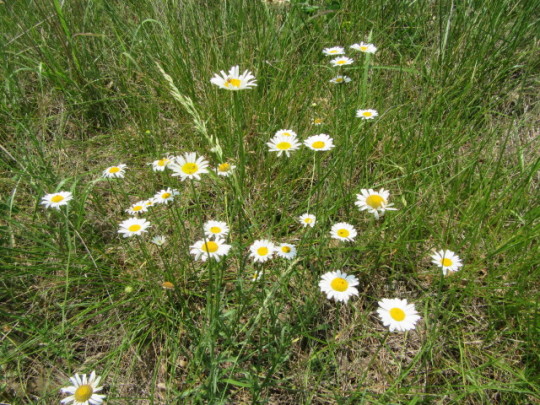
View On WordPress
#Achillea millefolium (Common Yarrow)#Allium vineale (Field or Wild Garlic)#Apocynum cannabinum (Hemp Dogbane)#Argynnis cybele (Great Spangled Fritillary)#Asclepias purpurascens (Purple Milkweed)#Conium maculatum (Poison Hemlock)#Cornus drummondii (Roughleaf Dogwood)#Dianthus armeria (Deptford Pink)#Dichanthelium clandestinum (Deertongue)#Elephantopus carolinianus (Leafy Elephant&039;s Foot)#Elmus virginicus (Virginia Wildrye)#Erigeron annuus (Annual or Daisy Fleabane)#Florinda coccinea (Black-tailed Red Sheetweaver)#Galium aparine (Cleavers/Catchweed Bedstraw)#Helenium flexuosum (Southern Sneezeweed)#Leucanthemum vulgare (Oxeye Daisy)#Penstemon digitalis (Foxglove Beardtongue)#Phytolacca americana (American Pokeweed)#Pontia protodice (Checkered White)#Potentilla simplex (Common Cinquefoil)#Ribes missouriense (Missouri Gooseberry#Sanicula canadensis (Black Snakeroot)#Sisymbrium officinale (Hedge Mustard)#Smilax tamnoides (Bristly Greenbriar)#Verbesina virginica (White Crownbeard/Frostweed)
0 notes
Text
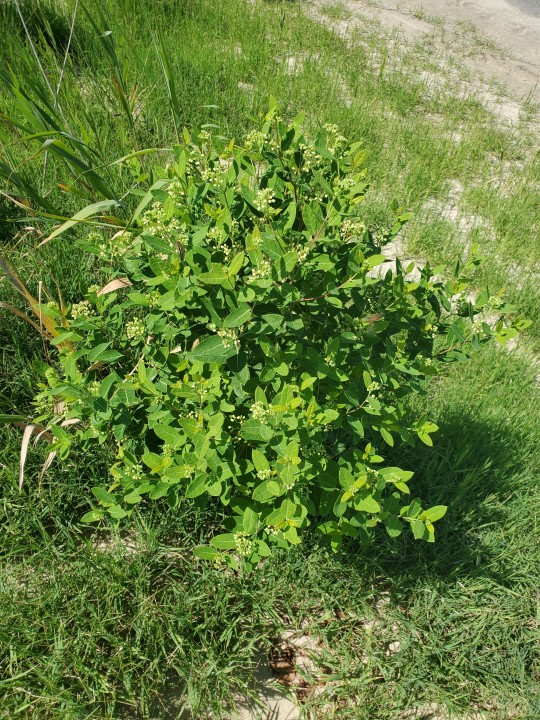
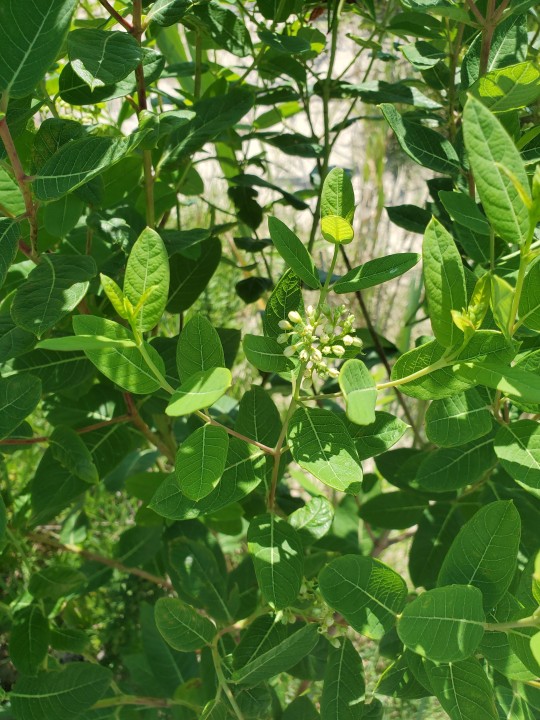
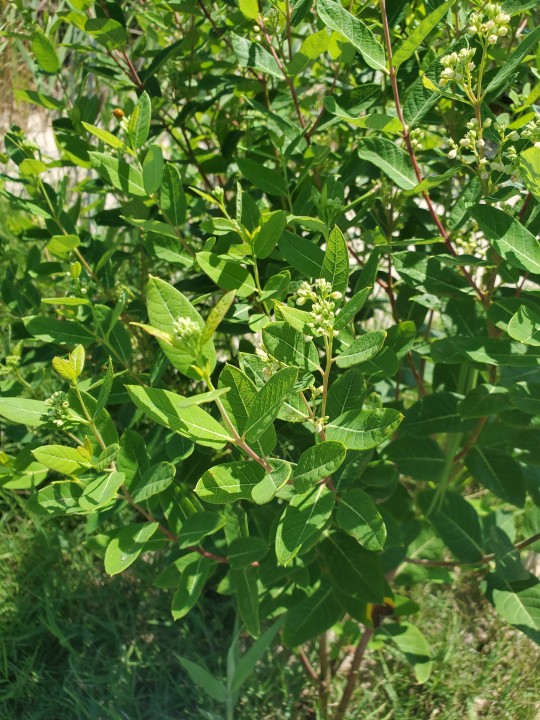

Hemp Dogbane (flowering & fruiting), Apocynum cannabinum
8 notes
·
View notes
Text
New species I’m getting this year!
Antennaria rosea (Rosy pussytoes)
Arisaema dracontium (Green dragon)
Asplenium scolopendrium (Hart’s tongue)
Calycanthus floridus (Sweetshrub)
Carex aurea (Golden sedge)
Claytonia virginica (Fairy spuds)
Echinacea pallida (Pale purple coneflower)
Equisetum hyemale (Scouring rush)
Iris setosa (Bristle-pointed iris)
Linnaea borealis (Twinflower)
Lonicera canadensis (Canadian fly honeysuckle)
Lonicera involucrata (Twinberry honeysuckle)
Osmunda claytoniana (Interrupted fern)
Passiflora incarnata (Maypop)
Pediomeleum esculentum/Psoralea esculenta (Breadroot)
Polystichum munitum (Western sword fern)
Triglochin maritma (Seaside arrowgrass)
Vaccinium macrocarpon (Large cranberry)
Viburnum acerifolium (Maple-leaved viburnum)
Viola pedata var. bicolor (Crowfoot violet)
Species I’m trying again this year after failed past attempt(s)!
Antennaria neglecta (Field pussytoes) Was planted in late summer and I was kept from watering it adequately.
Argentina anserina (Silverweed) No idea why they didn’t survive where I put them, but try, try again, elsewhere this time.
Artemisia frigida (Fringed sagebrush) First time ended up being white sage brush instead; second time plug was on its last legs on arrival, died soon after.
Chamaenerion angustifolium (Fireweed) Going to try this in yet another spot.
Dennstaedtia punctiloba (Hay-scented fern) Supposed to be aggressive! Mine was not. Maybe the one I get this year.
Dioscorea villosa (Wild yam) Planted the tuber but it never came up.
Glycyrrhiza lepidota (Wild licorice) Squirrels...Dug it up and broke the stem.
Lupinus polyphyllus (Big-leaf lupine) Leafed out nicely for its first and second year and then just didn’t come up again after its second winter.
Maianthemum racemosum (False Solomon’s seal) Squirrels! Dug it up and broke the stem.
Pteridium aquilinum latiusculum (Western bracken fern) I put it in a dry shady spot, as recommended, and it died.
Rudbeckia hirta (Black-eyed Susan) SQUIRRELS!!! Dug it up and while I was visiting home and it dried out. Couldn’t revive it.
Silene acaulis (Moss campion) Sunny, wet, amongst rocks. Check, check, check, but they keep dying on me.
Sisyrinchium montanum (Blue-eyed grass) Two places tried, two place died. I shall try a third place this year.
Viola pubescens (Downy yellow violet) FUCKING. SQUIRRELS. Dug it up while I was at work and left it to scorch and dry out in the sun. Couldn’t revive it.
Species I’m getting again because I’m fairly sure mine didn’t make it
Apocynum cannabinum (Hemp dogbane) It might not have gotten enough sunlight thanks to the white mulberry that grew over. I’ll try it in a different area.
Sagittaria latifolia (Duck potato) It may come up after all but I don’t want to take the chance of planting too late if it doesn’t.
Sparganium americanum (American bur-reed) Not sure why, but we’ll try again this year. And I may yet be surprised.
Symplocarpus foetidus (Skunk cabbage) It’s possible it’s just young and takes longer to come up than it would if it were more mature, but I don’t want to take chances since there’s only one place I can get them at.
10 notes
·
View notes
Text
REPERTORIO DE:
CÁÑAMO
Descripción:
-Apocynum cannabinum. -Cannabis sativa. -Planta de especie, Cannabináceas.
Hábitat y distribución:
Es originaria de Asia y se distribuye en América y África.
Aplicación:
Las extremidades florales, las semillas de cáñamo (cañamones), consideradas como cereal energético por contenido de aminoácidos, hierro, proteína vegetal que ayuda al desarrollo muscular y regeneración de tejidos como otros cereales, legumbres, frutas, hortalizas y verduras en alimentación. Entre las grasas estan, los ácidos grasos esenciales como el Omega 3. También la planta de cáñamo se utiliza en la industria, por ejemplo textil, cosmética, papel, elementos aislantes, producción de fibras, sogas, etc.
Principios activos:
•Aceites esenciales. •Aminoácidos. •Cannabina. •Cannabinol. •Colina. •Terpeno. •Trigonelina.
Propiedades:
-Diurética. -Hipnótica. -Narcótica. -Sedante. -Semitóxica.
Utilidad:
-Flores. -Hojas. -Tallos. -Raíz.
También se elabora:
•Aceite. •Crema. •Ungüento.
Farmacopea homeopática:
En utilidad medicinal, al macerar las hojas florecidas se obtiene tintura madre y se logran por dilución las diferentes dinamizaciones; para disponer del medicamento adecuado para cada caso clínico.
Clínica:
•Ardor en uretra. •Ascitis, seguidas de palpitaciones cardíacas. •Bronquitis. •Cataratas. •Cefalea. •Cistitis. •Constipación. •Insuficiencia mitral, con disnea. •Debilidad del corazón. •Diarrea mucosa. •Dispepsia. •Fatiga mental. •Hidropesías de origen renal o cardíaca. •Ira. •Orina alterada, en cantidad y calidad. •Priapismo. •Somnolencia. •Tos seca. •Vértigo.
Agravación:
Después de haber comido o bebido; después de dormir y en la mañana al despertar.
Mejoría:
Al aire libre.
Nota.
El remedio homeopático, se elabora acorde a casos clínicos.


0 notes
Text

Visions of love—Indian hemp.
#indian hemp#plants#earth#mother earth#love#beauty#magic#plant magic#spicy#apocynum cannabinum#prairie dogbane#umi ananda
1 note
·
View note
Photo



Dreamy dogbane fields at the Pymatuning ecology lab
1 note
·
View note
Photo

Dogbane (by me)
#Dogbane#Apocynum cannabinum#Apocynum#Apocynaceae#Gentianales#flowers#plants#summer#Morris Canal Greenway#Morris Canal#Warren County#New Jersey#mine
13 notes
·
View notes
Photo

Apocynum cannabinum
#Apocynum cannabinum#wildflower#wild flower#wild flowers#wildflowers#flower#flowers#plant#plants#garden#gardening#gardens#nature#nature photography#photography
33 notes
·
View notes
Photo
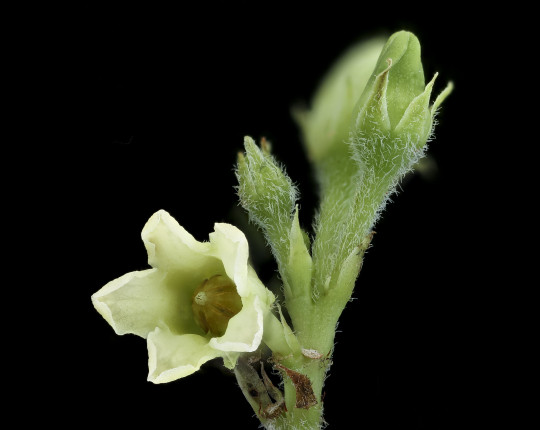
Indian Hemp/Dogbane - Apocynum cannabinum. Kin to milkweeds (indeed it has its cousin's nasty latex making it a very toxic salad green), but interestingly it does not have pollinia like milkweeds, but essentially sticky pollen, that gets glued to visitors. If I read things right the pollen is not used to feed baby bees (this needs to be verified) and it is mostly a nectar attraction game. In the google literature claims of attractiveness to bees is all over the map, some way it attracts a lot and others say it is mostly a moth/butterfly thing. I can tell from lots of field experience that there is often almost nothing on these plants and then BOOM bees all over the place. My impression is that it is more used when nothing better is blooming (sort of the Raman Noodle of the bee plant world). Good plant to stick in an established cool season field as it seems (like common milkweed) to be able to handle the competition. Photo and specimen by Helen Lowe Metzman.
#indianhemp#dogbane#glib#fenti#simple#emotes#fingercuffs#slightlyhairy#greenery#orb#invite#seldom#allgood#ecology#usgs
21 notes
·
View notes
Photo
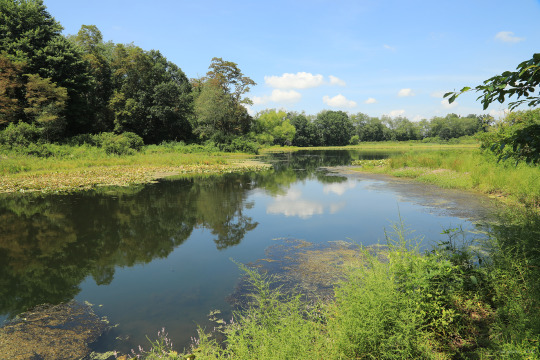
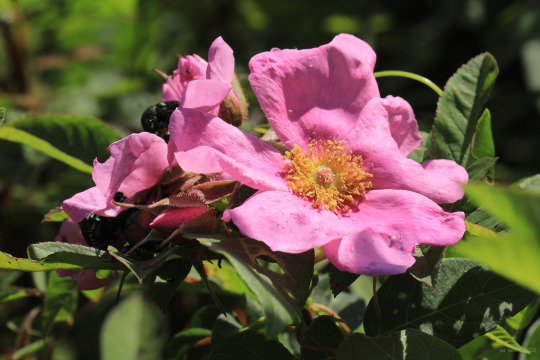
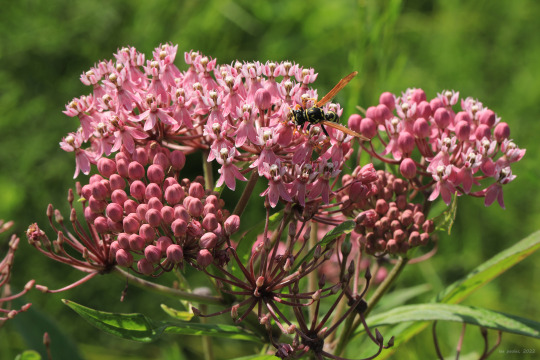

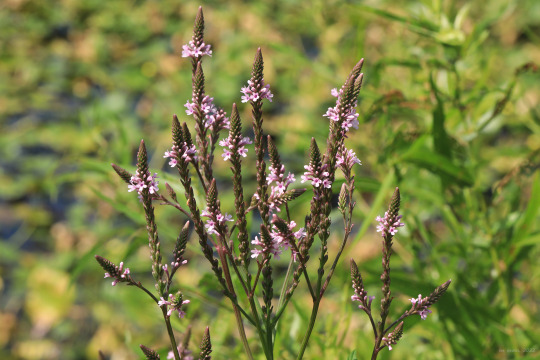
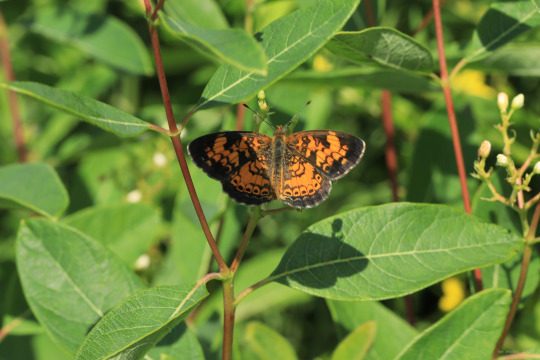


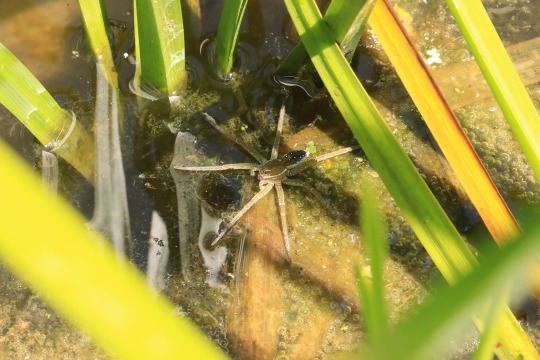
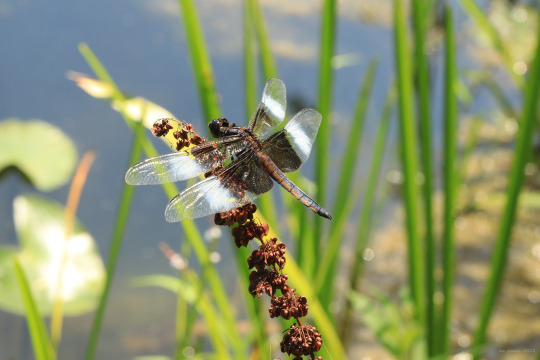
It was oppressively and unnecessarily hot today - in the low 90′s - so I eschewed any grand adventures and made homemade salsa instead with batches of newly-ripened goodies from my tomato and pepper pots. My sole foray outside was a mid-morning hike around Fairfax Pond-Rehe Wildlife Management Area, whose beautiful, interconnected ponds and waterways seemed right for the occasion. Swamp rose (Rosa palustris) is a bit past peak now, and riddled with Japanese beetles, but it makes a grand display starting in early July.
From top: swamp rose, a native perennial shrub that forms dense, colorful thickets along streambanks and ponds; rose milkweed (Asclepias incarnata), another wetlands-loving perennial with high-wildlife value; Allegheny monkeyflower (Mimulus ringens), an adorable colonizer with whimsical, double-lipped flowers; blue vervain (Verbena hastata), also known swamp verbena, a graceful, moisture loving perennial whose flowering spikes bloom from the bottom up; a silvery checkerspot (Chlosyne nycteis) cooling its jets on Indian hemp (Apocynum cannabinum), also known as hemp dogbane; fringed loosestrife (Lysimachia ciliata), yet another wetlands-loving perennial, whose droopy yellow flowers are quite beguiling; six-spotted fishing spider (Dolomedes triton), also sometimes referred to as dock spider for its habit of rapidly vanishing between the cracks of boat docks; and a male widow skimmer ((Libellula luctuosa) finding the perfect perch for scouting females and prey.
#appalachia#vandalia#summer#flora#rosa palustris#swamp rose#asclepias incarnata#rose milkweed#mimulus ringens#allegheny monkeyflower#verbena hastata#blue vervain#swamp verbena#chlosyne nycteis#silvery checkerspot#apocynum cannabinum#indian hemp#hemp dogbane#lysimachia ciliata#fringed loosestrife#dolomedes triton#six-spotted fishing spider#libellula luctuosa#widow skimmer#dragonfly#fairfax pond-rehe wildlife management area
35 notes
·
View notes
Text
Tales From The Ditch...
Tales From The Ditch…
Hello everyone! I hope you are all doing well. We had more rain, up to 3 3/4″ through Thursday with more in the forecast. A few days ago I was trimming the ditch in front of what I always call the “other yard.” It is where my grandparent’s house was and where the garden is. Well, I didn’t plant the garden this year but that is beside the point. The part of the ditch in front of where the garden…

View On WordPress
#Ampelamus laevis (Honey-Vine Climbing Milkweed)#Apocynum cannabinum (Hemp Dogbane)#Convolvulus arvensis (Field Bindweed)#Euphorbia davidii (David&039;s Spurge)#Lathyrus latifolius (Bread-Leaved Pea/Everlasting Pea)
0 notes
Text
#1456 - Eumolpine Leaf Beetle

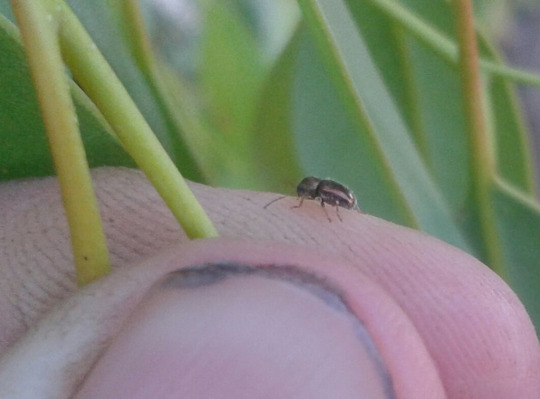
One of the 7000+ species of small Leaf Beetles from the Eumolpinae subfamily of the Chrysomelidae. There’s also 500 genera. Typical coloration in this subfamily ranges from bright yellow to dark red, but many are iridescent, or brilliantly metallic blue or green.
They’re found across most of the world, apart from the more isolated island groups, and a few species are pests. Some species will eat the roots of a host plant as larvae, then switch to the leaves as adults. One well-known species, the Dogbane Beetle Chrysochus auratus of eastern North America, eats the poisonous, latex-secreting Apocynum cannabinum (dogbane, or wild cotton). Some populations will first sever the latex channels before eating the rest of the leaf. Elsewhere, the beetles just clean the latex off their jaws as they eat.
Baldivis, Perth
17 notes
·
View notes
Photo




Hemp-dogbane (Apocynym cannabinum) has edible seeds.
More info on Plants for a Future.
Special note: this species might be mistaken for the invasive dog-strangling vines (Vincetoxicum rossicum and Vincetoxicum hirundinaria), which have similar fruits. The flowers of V. rossicum, however, are purple or brown and the leaves of both species are greener while the native hemp-dogbane has a prominent pale main vein in their leaves. They also grow into vines at the top. Neither of them have any known edible parts and are in fact poisonous.


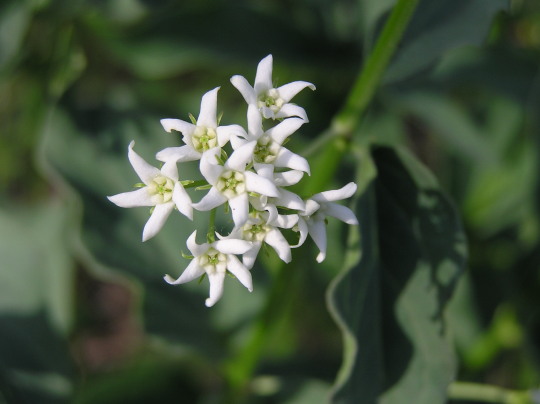

#native Ontario plant species with edible parts#flowering plants#flowers#edible plants#native North American species#plants I want#hemp-dogbane#Indian hemp#Apocynum cannabinum#Canadian nuts and seeds#dangerous look alikes#invasive species#poisonous plants#dog-strangling vines#Vincetoxicum rossicum#Vincetoxicum hirundinaria
7 notes
·
View notes
Photo

APOCYNUM CANNABINUM APOCYNUM CANNABINUM Indian Hemp Increases secretions of mucous and serous membranes and acts on cellular tissue, producing œdema and dropsy and on skin causing diaphoresis.
0 notes